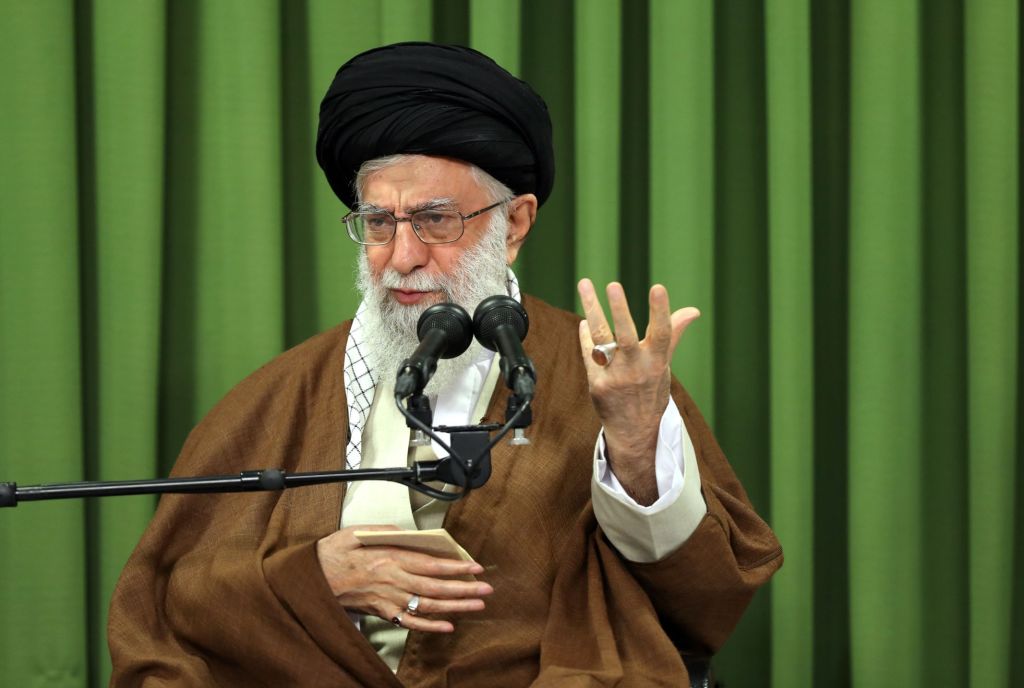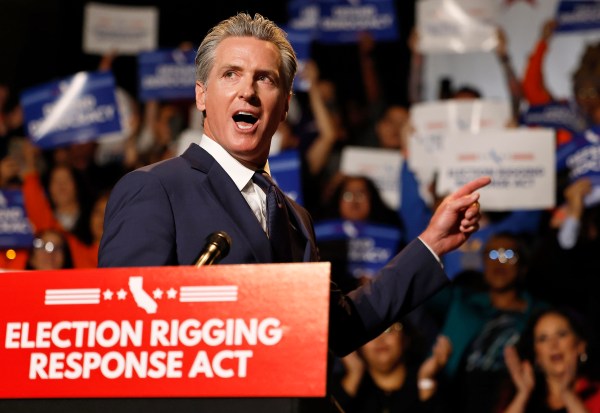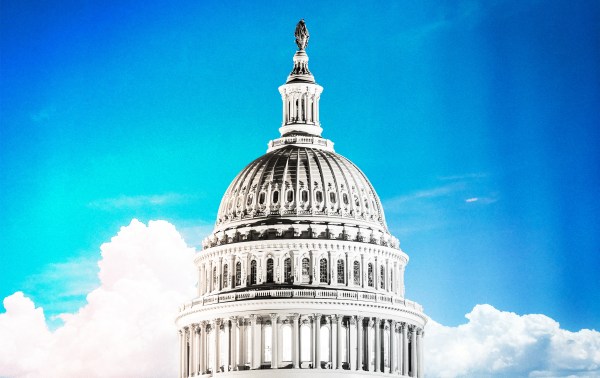Demonstrations ongoing in Iran—lasting almost six weeks at this writing—have put the government of the Islamic Republic at risk for the first time since the Islamic Revolution in 1979. Many of the ingredients of a regime-killing mix are there, including widespread unrest beyond the original liberals and women. University professors and students, shopkeepers and energy sector workers have called strikes, and ethnic minorities have also joined in, spreading the unrest throughout the diverse country. Still, the regime falling remains a possibility rather than a probability, and security forces have thus far remained loyal. As the leadership of Iran teeters ever so slightly, however, it prompts a fascinating question: What would the Middle East look like absent the malign machinations of the ayatollahs?
The Islamic Republic’s reach is wide and deep in the region, and involves far more than the occasional headline about Hezbollah, the Houthis, or Hamas. Indeed, Iran has patented a foreign policy model that has defined an era and transformed the political topography of the Middle East in ways that will fill textbooks for generations to come. Together with the Islamic Revolutionary Guard Corps, and particularly the elite Quds Force late leader, Gen. Qassem Suleimani, Iran’s ayatollahs have upended governments (Iraq, Lebanon, Yemen), fought and stage-managed wars directly and via proxies (with Iraq, Israel, and Saudi Arabia; in Syria and Lebanon) and enmeshed themselves in regional governance, economics, and culture.
Predicting the future of Iran is as parlous an occupation as any in geopolitics. Should the regime fall, it is unclear who will lead Iran in its stead. Is there a liberal government in the wings, lurking overseas as Ayatollah Ruhollah Khomeini did for many years? Or will the ever-more dominant IRGC step in and transform Iran from a theocratic dictatorship to a military one? Is there a “regime-lite”—styled after Iran’s elusive moderate Islamists? Or another version of the current regime, the dream of the cult-like opposition Mojahedin-e-Khalq (MEK)? There is no sure answer to the question. No deus ex machina is pulling the strings, maneuvering for a better leadership. The Biden administration is arguably passively pro-regime, or at best loath to seek to topple it in favor of something else. This is not unlike the Obama administration, which was palpably dismayed by Iran’s “Green Revolution” in 2009, believing it would stand in the way ofnegotiating a nuclear deal with the ayatollahs.
Still, if imagining a better world is the prime directive of foreign policy, it’s worth asking what might happen if the cornerstone of the region-wide edifice Iran is constructing in the Middle East suddenly crumbled. Region by region, group by group, a change of that magnitude would be existential for many.
After regime security, the Iranian government has had three major priorities, interchangeable in their order. One has been the cause of “Palestine,” in regime terms, the eradication of the state of Israel. In service of that cause, Tehran has backed three groups, Hezbollah, Hamas, and Palestinian Islamic Jihad (PIJ). Setting aside Hezbollah, which wears many hats, Hamas and PIJ are dedicated solely to their local mission—fighting Israel, as well as Palestinian collaborators who do not submit to their leadership.
Hamas currently rules Gaza and has created an effectively separate Palestinian statelet apart from the Palestinian Authority-run West Bank. It has also presided over Gaza’s descent into Islamist extremism, mass unemployment, and regional isolation. But Hamas’ Gaza leader, Yahya Sinwar, appointed in the wake of a post-Arab Spring shakeup within the terror group, is evidence of Iran’s vicelike grip. Indeed, a rare show of principled opposition to the dictatorial Bashar al-Assad regime in Syria landed Hamas in hot water, resulting in its excommunication from Iran’s sponsored circle of resistance. The subsequent personnel shuffle, and a groveling return to Tehran, reinstated the group. Message received. Still, Tehran has kept its options open, continuing to support the smaller PIJ, which has grown in size and capability in recent years.
Would the collapse of Iranian backing for these Palestinian terror groups affect the battle to regain all the territory held by the Israel? Not decisively, but seriously. Others would certainly step in, with Qatar coming to mind first and foremost. But even Qatar (host to a large U.S. airbase) has its constraints, and is unlikely to be interested in donning Iran’s mantle as a state sponsor of terrorism.
And then there’s Hezbollah, the jewel in the crown of Iran’s proxy armies. A mere glimmer in the regime’s eye in the early 1980s, the group has risen in capability, reach, and arms to become a regional power broker. Hezbollah effectively governs Lebanon; it was the tool used by Tehran to rescue its proxy Assad in Damascus when the Syrian dictator’s own forces proved unequal to the task of standing up to the Syrian people (as well as the terror groups that moved in to that conflict). Hezbollah is Iran’s weapon of choice against Israel; the group has shared its terrorism expertise with al-Qaeda; its growing ties with Hamas have tightened the circle of Iranian puppets acting in the Levant. Hezbollah was brought into Iraq when Iran was concerned about its failing fortunes there. It has trained Iranian proxies throughout the region.
Now, it’s reasonable to assume that even in the event of the disappearance of its financier and spiritual leaders, Hezbollah is strong enough to survive on its own. The group has independent sources of income, whether from the Lebanese government itself, the Lebanese people, its illicit businesses, or cash infusions from sympathetic Gulf powers. But the loss of Iranian cash (up to $1 billion a year at certain points) and sponsorship, as well as regular arms shipments via Syria, cannot be seen as anything other than a blow. In addition, severing the umbilical cord between Beirut and Tehran would theoretically provide Israel more latitude to conduct major military operations to degrade the group with a view to finally crushing it—a longtime goal for Jerusalem.
Then there’s Iran’s mischief closer to home, the so-called Popular Mobilization Forces in Iraq, effectively Iranian proxy armies that answer to the IRGC’s command, occasionally go off on their own (like the time they tried to kill Iraq’s prime minister with a drone), and otherwise manipulate Iraq’s political and military situation to serve Tehran’s agenda. Again, the Hashd, as they are known in Iraq, are mostly Iraqis. This is Iran’s magic—the ability to take co-sectarians in disparate countries and bend them to serve another nation’s agenda. The Hashd play a role in Iraqi parliamentary politics and have upended several governments. They have attacked U.S. forces on the ground in Iraq. And now, they are reportedly inside Iran helping the government kill its own people.
Like Hezbollah, the Hashd have woven themselves skilfully enough into Iraq’s political tapestry, and have legitimate political players in the country. It’s the hybrid politics/militia role that is so dangerous, and has become such a signature of Iranian proxy strategy.
Nor are the Hashd the only Iranian-backed players in Iraq. Indeed, there are few independent parties, as Iran has made it its business to ensure that Iraq is a wholly owned subsidiary, with remarkably little pushback from Washington. Of course, a different government in Iran would likely remain eager to project influence into Iraq; ideally, however, it would be a more normal Mexico-U.S. style neighborly concern rather than an ongoing circus of murder and mayhem ordered by ringmasters in Tehran.
The Islamic Republic has similarly glommed on to the Houthis—Arab Zaydi Shiites—of Yemen, turning the country into a small clone of itself. Like Iran’s other proxies, the Houthis have developed their own weapons-making factories and host advisers from the IRGC. Like their masters in Tehran, they have ushered in a chauvinist Shiite dictatorship at home, and spend substantial time targeting Sunni Arab civilians in both Saudi Arabia and the United Arab Emirates. Absent Iran, the Houthis might still be a formidable force within Yemen. But they would be alone, without the encircling power that Iran exercises over the Straits of Hormuz and the Gulf in general.
Of course, there’s the homeland itself. The Iranian people have suffered for 43 years under a dictatorship that has inserted itself into every aspect of Persian life: What is worn, what is taught, what is watched, what is heard, what is spoken, what is sold. In the last six weeks, security forces have murdered hundreds of Iranian civilians. Thousands more have been imprisoned, with kangaroo courts and execution ahead for many.
And if all of that is a matter of indifference—a blot in a region with too many to count—perhaps it is worth thinking of the nuclear weapons program ongoing inside Iran; the ever more advanced missile program; the conventional weapons arsenals… all are a major proliferation risk. Some of these weapons are being used today to support Russia’s war of aggression against Ukraine, and all could be eventually used to attack the United States and its allies.
Is this a war the United States should go looking for? After Iraq, there is little stomach for such a challenge. And indeed, the Biden administration has done precious little for the democratic hopes of Iran’s people, nor the women’s rights they profess to care for so much. But like the valiant battle of the Ukrainian people against a foreign usurper, the Iranian people are standing against their tormentors at home with courage and persistence. Their struggle deserves the world’s support, rhetorical and more. Because imagining a Middle East without the malign rulers of the Islamic Republic makes it clear that the rewards of their success would not redound to the Iranian people alone.






Please note that we at The Dispatch hold ourselves, our work, and our commenters to a higher standard than other places on the internet. We welcome comments that foster genuine debate or discussion—including comments critical of us or our work—but responses that include ad hominem attacks on fellow Dispatch members or are intended to stoke fear and anger may be moderated.
With your membership, you only have the ability to comment on The Morning Dispatch articles. Consider upgrading to join the conversation everywhere.